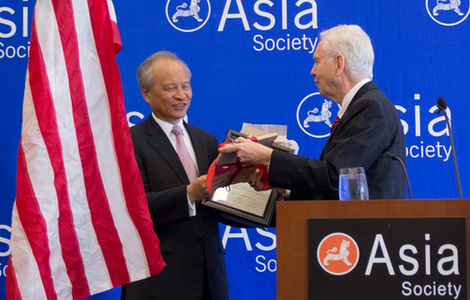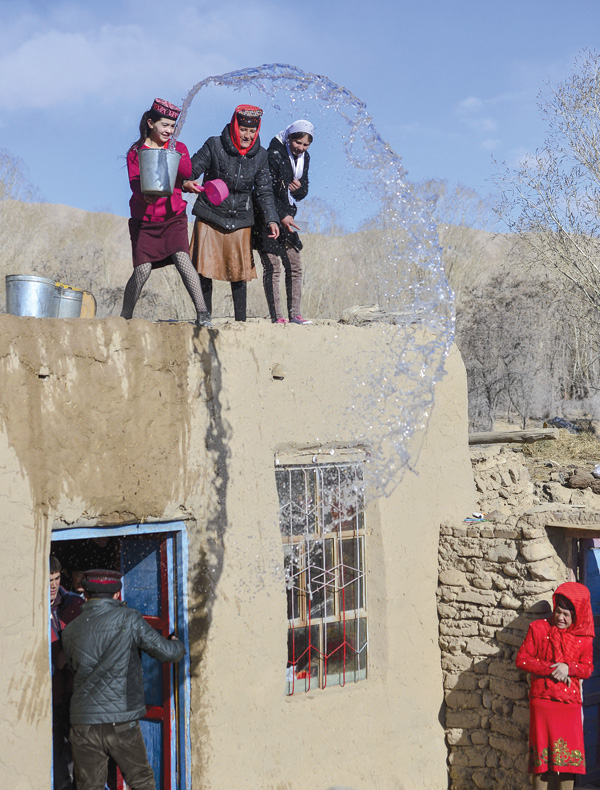Tourism in Xinjiang is bouncing back
Updated: 2015-05-15 11:17
By Cui Jia(China Daily USA)
|
||||||||
The tourism industry of the Xinjiang Uygur autonomous region, which was hit hard in 2014 because the fear of random terrorist attacks made some people choose not to the region, has begun to recover in 2015 as the social situation becomes more stable, according to the regional tourism bureau.
The number of tourists visiting the Xinjiang Uygur autonomous region during the three-day Labor Day holiday in May has increased more than 11 percent year-on-year, according to the latest figures from the bureau.
More than 7.2 million domestic tourists visited the one of the most popular tourist destinations in China known for its grand natural beauty and diversified ethnic culture during the first three months of 2015, up more than 9 percent year-on-year. The region also attracted 256,300 foreign tourists in the same period of time.
The region will especially work on promoting tourism in southern Xinjiang, which was an important area linking the ancient Silk Road and has the rich traditional Uygur culture. Compared to other areas, southern Xinjiang has had the most difficult time luring tourists in 2014 because most of the terrorist attacks happened there.
Xinjiang has also started the construction of the Silk Road Economic Belt tourist service center on April 30. President Xi Jinping proposed to establish the economic belt to increase economic commerce along the ancient trade route stretching through Central Asia to Europe.
The center, which will be put to service in three years time, will provide tourists with information and services to all attractions in Xinjiang and other countries on the economic belt.
As China's western-most region, Xinjiang borders eight countries and the tourism bureau plans to enhance cooperation with neighboring countries, such as Kazakhstan, Kyrgyzstan and Mongolia allowing tourists in Xinjiang to go aboard easier and extend their trip to countries on the economic belt.
In an effort to encourage more people to visit the China-Kazakhstan international border cooperation center at the border city of Horgos, people can now go into the center built on both Chinese and Kazakh territories just with their national ID card, instead of having to apply for a permit at the border police bureau in their hometown. The number of visitors to the center soared after the new policy was introduced.
People from China and Kazakhstan can enter the trans-national free-trade center, which was officially put to use in 2012, without a visa. Besides shopping and trading goods produced in both countries in the center, many people also like to take pictures at the lines separating China and Kazakhstan.
Although Xinjiang's GDP grew by 10 percent in 2014, higher than the national average of 7.4 percent, it failed to reach the 11 percent growth target. This was mostly because of the slowdown in tourism, according to the regional development and reform committee.
Tourism is also expected to boost employment and bring extra income to the locals. The regional government believes employment is key to keep Xinjiang stable.
So far, Xinjiang's 1,177 home inns have provided about 12,000 jobs for local farmers and herdsmen. The labor-intensive tourism industry, which has a low market entry threshold, is creating a large number of jobs for the locals, according to the regional tourism bureau.
Mao Weihua contributed to the story.
cuijia@chinadaily.com.cn

 Across America over the week (from May 8 to 14)
Across America over the week (from May 8 to 14)
 Premier Li holds welcoming ceremony for Indian PM Modi
Premier Li holds welcoming ceremony for Indian PM Modi
 Saved by a sunroof
Saved by a sunroof
 Unusual but true: Japan's bridge a nightmare for drivers
Unusual but true: Japan's bridge a nightmare for drivers
 A look into Shenzhen smart watch assembly line
A look into Shenzhen smart watch assembly line
 Cannes Film Festival unrolls star-studded red carpet
Cannes Film Festival unrolls star-studded red carpet
 Amazing artworks in supermarkets
Amazing artworks in supermarkets
 Top 10 venture investors in the world
Top 10 venture investors in the world
Most Viewed
Editor's Picks

|

|

|

|

|

|
Today's Top News
Premier Li says talks with Modi 'meet expectations'
A bilateral treaty's potential praised
PBOC confirms debt-swap plan
US and Cuba to hold another round of talks
US would consider military force to defend Gulf nations: Obama
Xi to give Modi a hometown welcome
Aviation, railway top Li's agenda for Latin America
Cui rebuffs US stance on
S. China Sea
US Weekly

|

|







